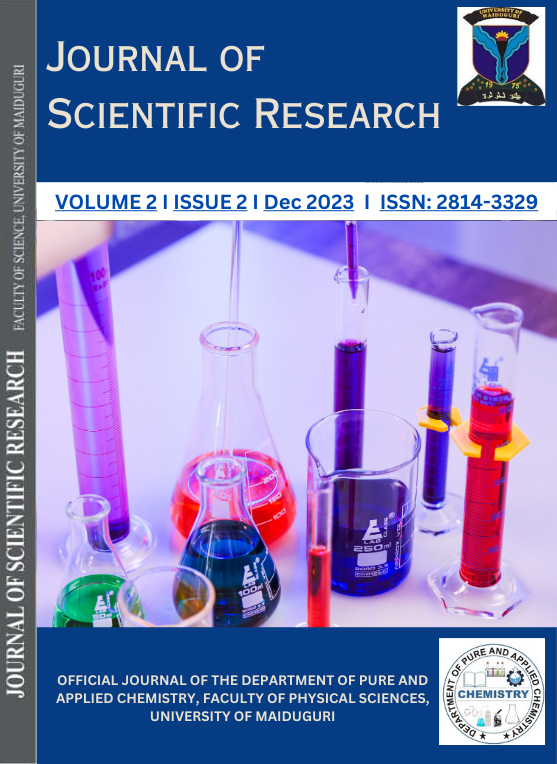PRELIMINARY PHYTOCHEMICAL SCREENING AND IN VITRO ANTIOXIDANT ACTIVITY OF CRUDE AND PARTITION PORTIONS OF Leptadenia hastata ROOT EXTRACTS
Keywords:
Phytochemical Screening; In-vitro; Antioxidant; Leptadenia hastataAbstract
Leptadenia hastata is an edible, non-domesticated vegetable. It is cultivated and collected in the wild, and arid tropical regions characterised by sandy soil composition throughout Africa. The ethnobotanical data collected from Traditional Medical Practitioners in northern Nigeria indicates that L. hastata is utilized for the management of diabetes mellitus. Previous studies have documented the antibacterial and antimicrobial properties of L. hastata. This study was carried out to determine the chemical content and in-vitro antioxidant activity of the root of L. hastata. After exhaustive soxhlet extraction of the root, the extract was then fractionated. In-vitro antioxidant activity and qualitative phytochemical analysis of the fractionated and the residual portions were determined using a DPPH free radical assay and standard procedure. The extractive values of the ethanol extract, chloroform, ethyl acetate, n-butanol, and residual aqueous portions were 18.3% w/w, 0.89% w/w, 21.6% w/w, 13.2% w/w, and 45.3% w/w, respectively. The result of qualitative phytochemical analysis of these extracts revealed the presence of alkaloids, carbohydrates, cardenolides, cardiac glycosides, flavonoids, saponins, and terpenoids in all but alkaloids and saponins were not detected in the chloroform portion. The crude extract was found to be safe, as indicated by an oral mean lethal dose (LD50) ≤ 3600 mg/kg body weight in rats. In-vitro antioxidant activity using a 2,2-diphenyl-1-picrylhydrazyl (DPPH) free radical assay revealed the presence of antioxidant principles in the crude extract, chloroform, ethyl acetate, and n-butanol portions similar to the standard ascorbic acid. However, only chloroform, ethyl acetate, and n-butanol showed concentration-dependent scavenging activity at concentrations of the solutions (10 mg/ml, 20 mg/ml, 30 mg/ml, 40 mg/ml, and 50 mg/ml). Conclusively, L. hastata has proven to be a good source of antioxidant compounds using chloroform, ethyl acetate, and n-butanol as solvents.
Keywords: Phytochemical Screening; In-vitro; Antioxidant; Leptadenia hastata
https://doi.org/ 10.5281/zenodo.10577646

